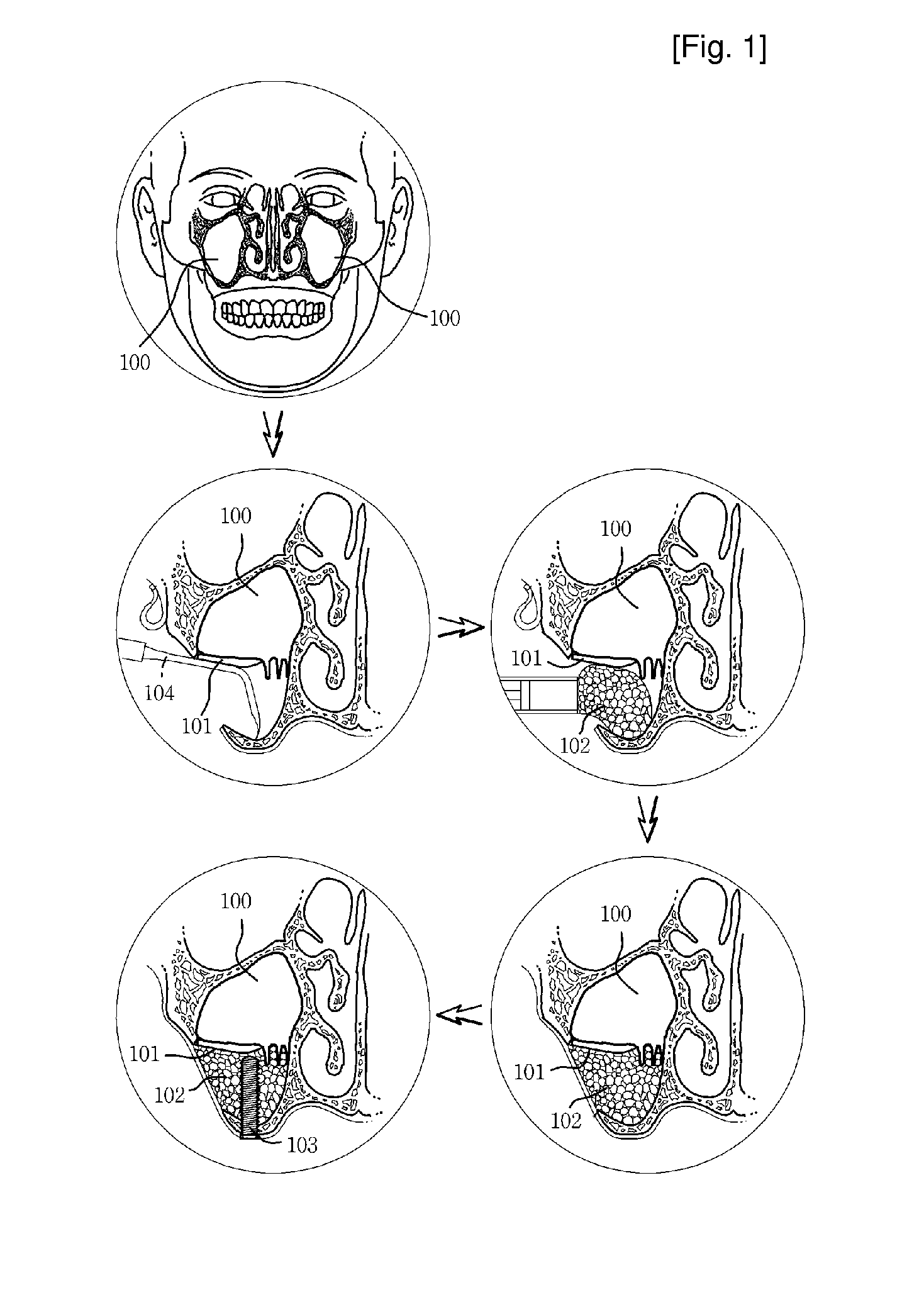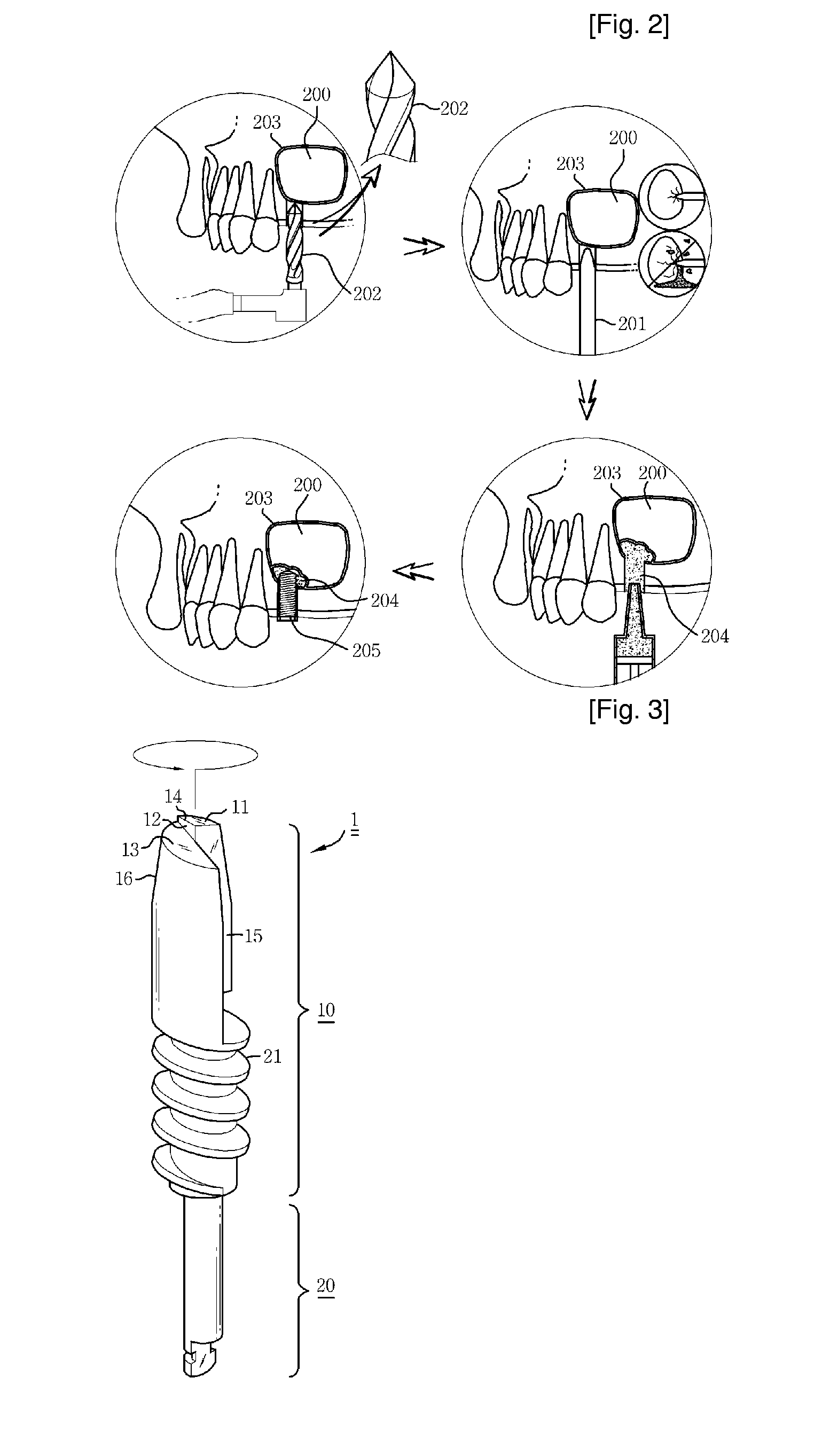Reamer for Operating Implant
a technology for operating implants and reamers, which is applied in the field of reamer for operating implants, can solve the problems of prolonging the treatment period, difficult to operate the upper molar implant, and taking a long time to ossify the grafted bone, etc., and achieves the effect of convenient and safe operation
- Summary
- Abstract
- Description
- Claims
- Application Information
AI Technical Summary
Benefits of technology
Problems solved by technology
Method used
Image
Examples
Embodiment Construction
[0039]FIG. 3 is a perspective view of a reamer according to a preferred embodiment of the present invention, FIG. 4 is a partially enlarged view of the reamer according to the present invention, FIG. 5 is a view showing an implant operating process of the reamer according to the present invention, and FIG. 6 is a comparative view showing a state where a drill and the reamer are used according to the present invention. Hereinafter, reference will now be made in detail to the preferred embodiments of the present invention, examples of which are illustrated in the accompanying drawings.
[0040]As shown in FIGS. 3 and 4, the reamer 1 according to the present invention includes a cutting part 10 for forming a hole 33 for planting an implant 34 in a bone 32, and a connection part 20 extending from the bottom side of the cutting part 10 and having a diameter smaller than that of the cutting part 10.
[0041]The cutting part 10 is in the form of a cylinder having a predetermined diameter, and th...
PUM
 Login to View More
Login to View More Abstract
Description
Claims
Application Information
 Login to View More
Login to View More - R&D
- Intellectual Property
- Life Sciences
- Materials
- Tech Scout
- Unparalleled Data Quality
- Higher Quality Content
- 60% Fewer Hallucinations
Browse by: Latest US Patents, China's latest patents, Technical Efficacy Thesaurus, Application Domain, Technology Topic, Popular Technical Reports.
© 2025 PatSnap. All rights reserved.Legal|Privacy policy|Modern Slavery Act Transparency Statement|Sitemap|About US| Contact US: help@patsnap.com



